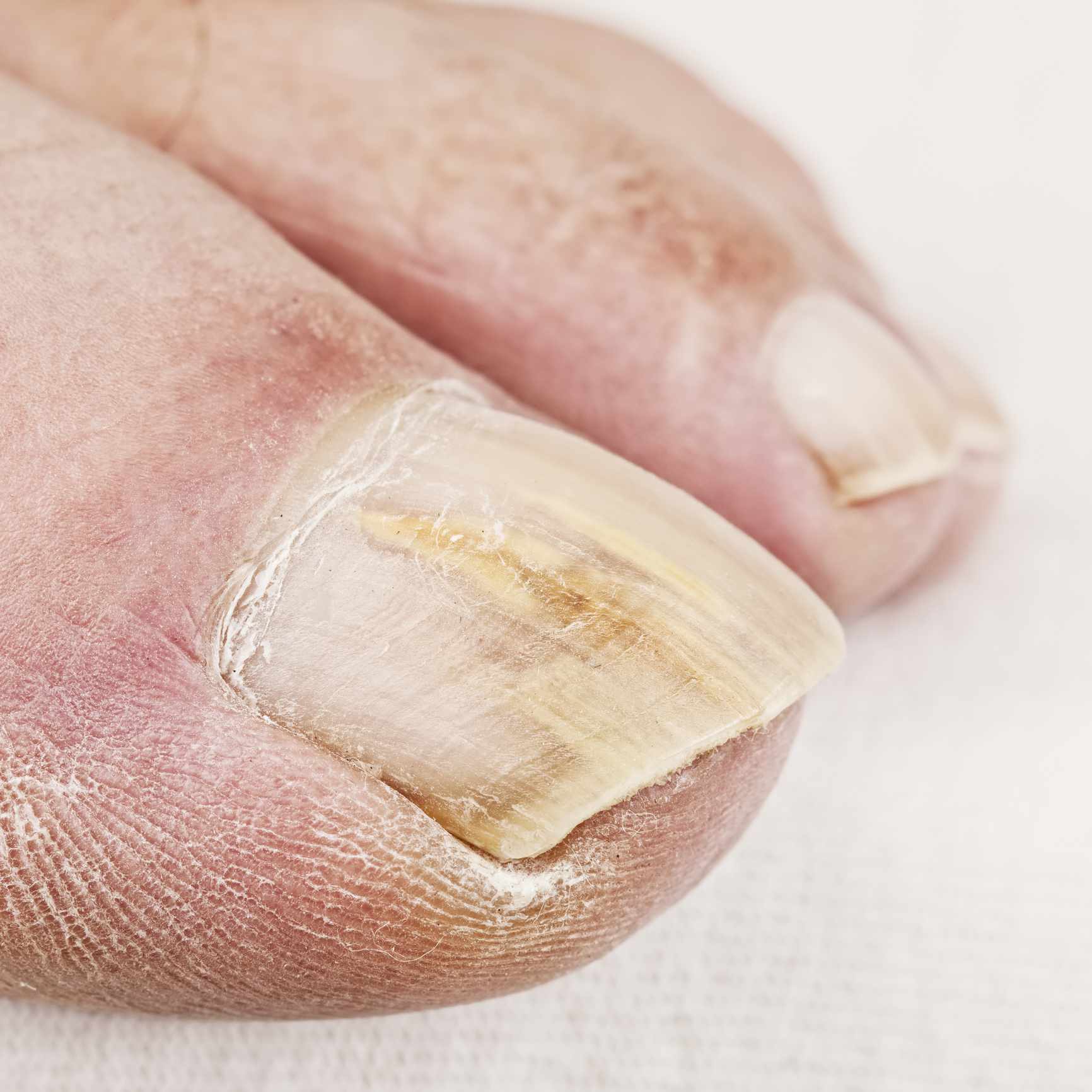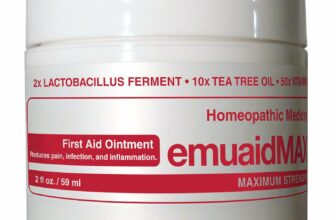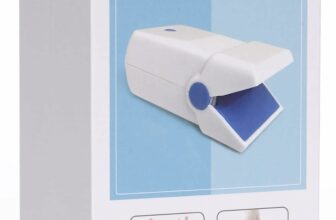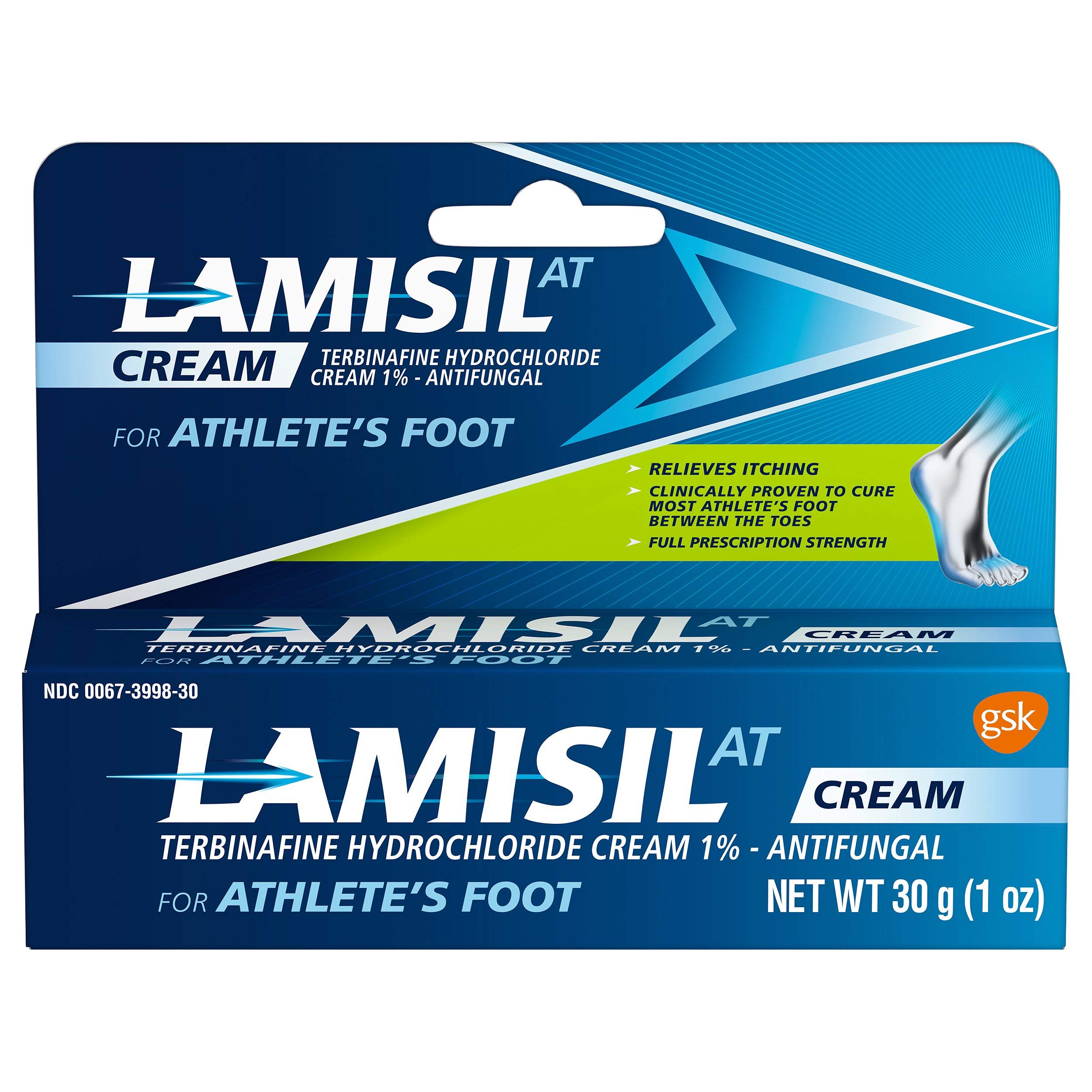
Lamisil Cream is one of the most popular antifungal cream treatments for toenail fungus and athletes foot, claiming to be a fast and effective option for getting rid of this condition. However, as with any medication, there are potential side effects and risks that should be considered before starting treatment.
Toenail fungus, also known as onychomycosis, is a common condition that affects many people worldwide, particularly seniors and those over 50 years old. This condition can be uncomfortable, unsightly, and difficult to treat.
In this review article, we will explore the effectiveness of Lamisil Cream for treating toenail fungus and athletes foot, with a focus on its potential side effects. We will also compare Lamisil Cream to other over-the-counter (OTC) treatments, including Swissklip Fungal Treatment, the best OTC nail fungus treatment; and provide recommendations for readers based on their needs and preferences for your overall proper foot care and healthy feet.
What is Lamisil for Toenail Fungus?
Lamisil for toenail fungus is a prescription medication that contains the active ingredient terbinafine. Terbinafine is an antifungal medication that works by stopping the growth of fungi and works great as ringworm treatment. Lamisil for toenail fungus is used to treat onychomycosis, a fungal infection that affects the nails, particularly toenails, but also helps to treat athletes foot.
Lamisil Cream and Terbinafine
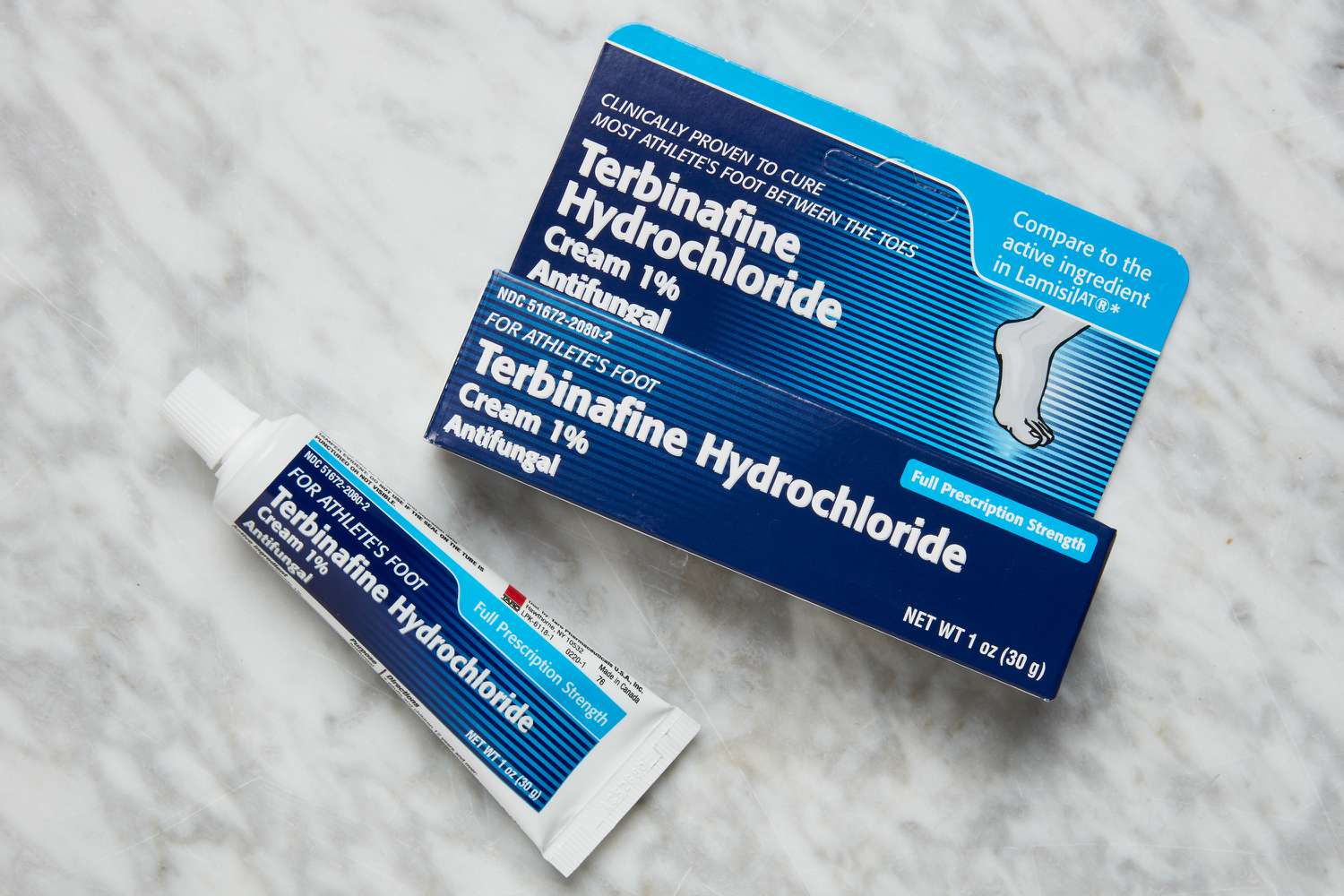
Lamisil Cream antifungal cream contains the active ingredient terbinafine, which is an antifungal medication that works by preventing the growth of fungi. Terbinafine is effective in treating various fungal infections, including toenail fungus, athletes foot and ringworm treatment. According to the manufacturer’s claims, Lamisil Cream can eliminate toenail fungus in as little as 12 weeks, making it a fast and efficient treatment option.
However, terbinafine can also cause potential side effects, including nausea, diarrhea, and stomach pain. In rare cases, it can also cause liver damage, which can be fatal. Patients who have liver disease or a history of liver problems should not take Lamisil Cream. Additionally, Lamisil Cream may interact with other medications, so patients should inform their doctors of any medications they are taking before starting treatment.
Is Lamisil and Terbinafine the same?
Lamisil and terbinafine hydrochloride 1 % are closely related, but they are not exactly the same thing. Lamisil is a brand name for the antifungal medication terbinafine, which is used to treat fungal infections of the skin and nails. Terbinafine Hydrochloride 1 % is the active ingredient in Lamisil, and it is also available under other brand names or as a generic medication.
Terbinafine Hydrochloride 1% works by stopping the growth of fungi, which can cause fungal skin infections to clear up over time. It is a broad-spectrum antifungal medication, meaning that it can be used to treat a variety of fungal infections, including athlete’s foot, foot between the toes and jock itch, groin area, and toenail and fingernail fungus.
Lamisil is available in several forms, including antifungal cream, tablets, and spray, and each form is used to treat different types of fungal infections. Lamisil Cream is applied towards the infected area and is used to treat systemic fungal infections, while Lamisil spray is applied topically to the affected skin and nails and is used to treat localized fungal infections.
While Lamisil is the most well-known brand name for terbinafine, there are other brand names and generic versions of terbinafine available as well. These medications may contain the same active ingredient as Lamisil, but they may have different inactive ingredients or dosages.
It is important to note that while Lamisil and terbinafine are closely related, they are not interchangeable. Patients should only take Lamisil or other terbinafine hydrochloride 1 % medications as directed by their doctor or pharmacist, and they should not switch between different brands or forms of terbinafine without consulting their healthcare provider.
Lamisil and Terbinafine are related but not exactly the same thing. Lamisil is the leading brand name for the antifungal medication terbinafine, with proven relief to treat fungal infections of the skin and nails. While there are other brand names and generic versions of terbinafine available, patients should only take Lamisil or other terbinafine medications as directed by their healthcare provider.
Pros and Cons of Lamisil Cream
There are several pros and cons to consider when using Lamisil Cream for treating toenail fungus. Some of the advantages of using this antifungal cream include:
- High success rate: Lamisil Cream have a high success rate in treating toenail fungus, with many patients reporting significant improvements in their uncomfortable symptoms within a few weeks.
- Convenience: Lamisil Cream is easy to take, usually requiring only one application per day.
- Fast results: Lamisil Cream can eliminate toenail fungus in as little as 12 weeks, making it a fast and efficient treatment option.
However, there are also some potential drawbacks to using Lamisil Cream, including:
- Potential side effects: Lamisil Cream can cause potential side effects, including nausea, diarrhea, and stomach pain. In rare cases, it can also cause liver damage.
- High cost: Lamisil Cream can be expensive, particularly for patients without insurance coverage.
- Prescription required: Lamisil Cream may require a prescription from a doctor, which can be inconvenient for some patients.
Lamisil for Toenail Fungus Main Features
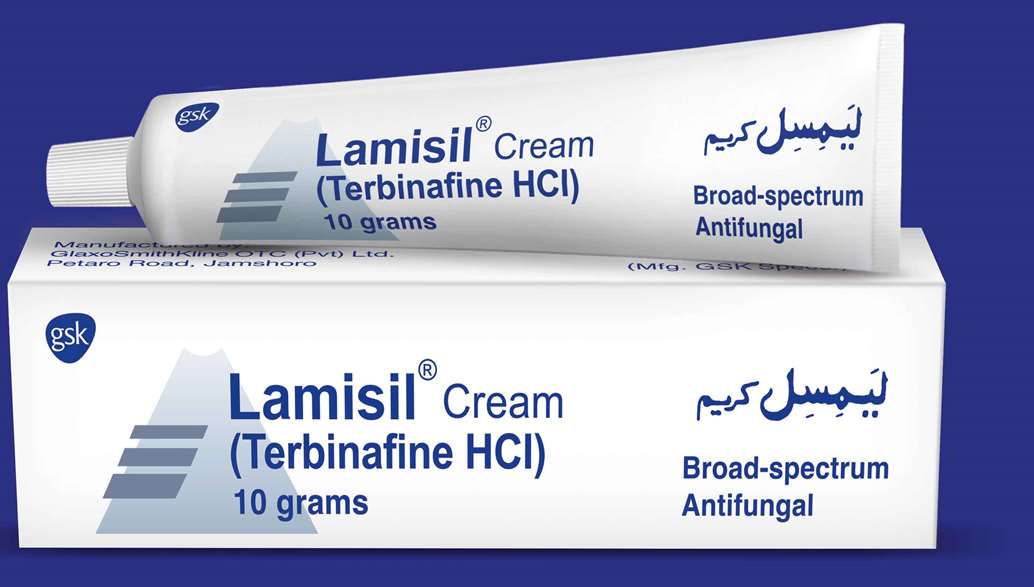
Lamisil for toenail fungus is known for its high success rate in treating toenail fungus, with many patients reporting significant improvements in their symptoms within a few weeks, being clinically proven. It is also convenient to use, usually requiring only one application per day. Lamisil for toenail fungus can eliminate toenail fungus in as little as 12 weeks, making it a fast and efficient treatment option.
However, Lamisil for toenail fungus can also cause potential side effects, including nausea, diarrhea, and stomach pain. In rare cases, it can also cause liver damage, which can be fatal. Patients who have liver disease or a history of liver problems should not take Lamisil for toenail fungus. Additionally, Lamisil for toenail fungus may interact with other medications, so patients should inform their doctors of any medications they are taking before starting treatment.
Comparison with Other OTC Treatments
There are several over-the-counter (OTC) treatments available for toenail fungus, including this Emoninail reviews. Other toenail fungus treatments are a natural treatment option that claims to be effective in treating toenail fungus without the potential side effects of prescription medications like Lamisil Antifungal Cream.
When comparing Lamisil Cream to other toenail fungus treatments, there are several differences to consider. While both treatments claim to be effective in treating toenail fungus, there are some notable differences in terms of effectiveness, cost, and safety.
Effectiveness: Lamisil Antifungal Cream has a high success rate in treating toenail fungus, with many patients reporting significant improvements in their symptoms within a few weeks. Other toenail fungus treatments on the other hand, may take longer to see results and may not be as effective for severe cases of toenail fungus.
Cost: Lamisil Cream can be expensive, particularly for patients without insurance coverage. Other toenail fungus treatments, on the other hand, is relatively affordable and may be a more accessible option for patients on a budget.
Safety: Lamisil Cream has the potential for side effects, including liver damage, while other toenail fungus treatments are a natural treatment option that claims to be safe and free of side effects.
Ultimately, the choice between Lamisil Cream and other toenail fungus treatments will depend on the individual patient’s needs, preferences, and budget.
Who Should Buy Lamisil Cream?
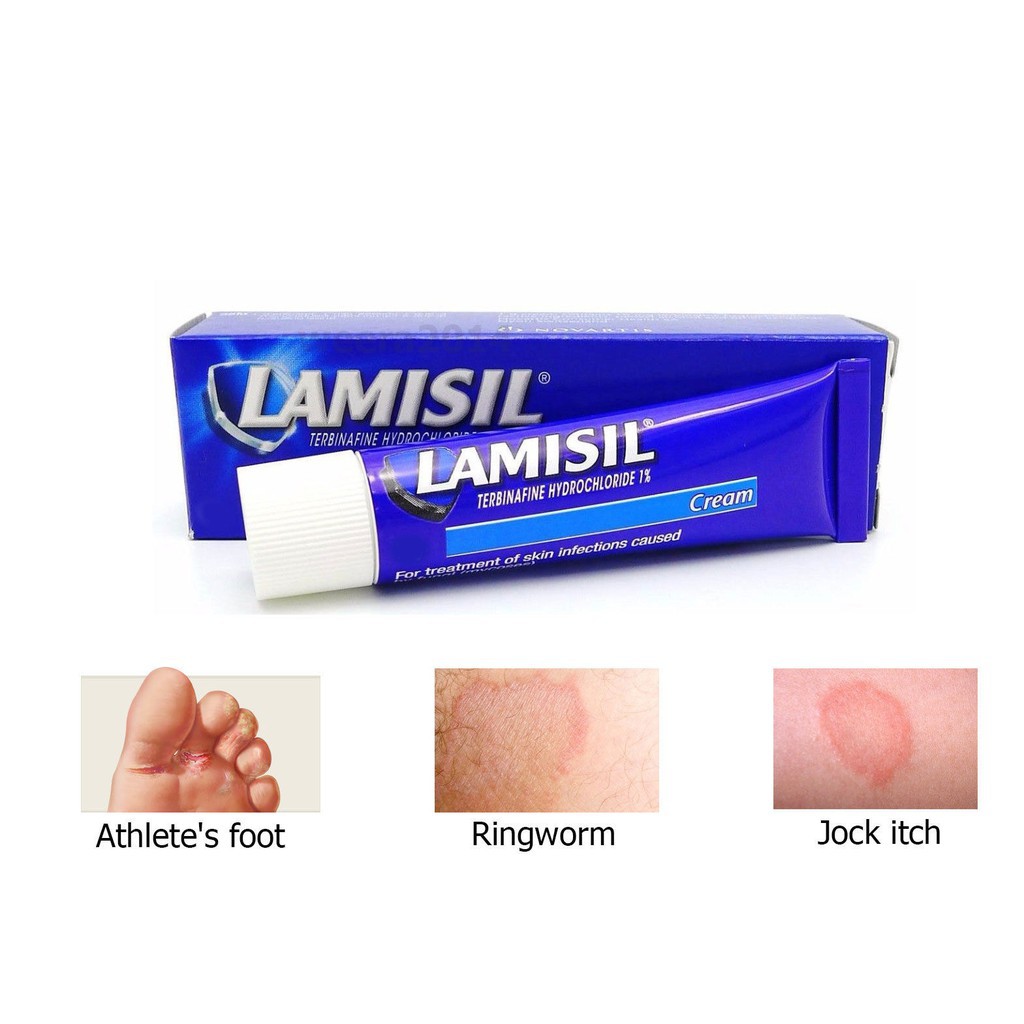
Lamisil Cream is an excellent antifungal cream option for patients who want a fast and effective treatment for toenail fungus and are willing to pay the price. However, Lamisil Cream antifungal cream is not recommended for patients with liver disease or a history of liver problems. Patients who are taking other medications should inform their doctor before starting Lamisil Cream to ensure that there are no potential drug interactions.
If a natural treatment option is preferred, Swissklip Medi-Care Anti-Fungal Stick Treatment is a better natural alternative treatment option that claims to be effective in treating toenail fungus without the potential side effects of prescription medications and drug interactions like Lamisil Antifungal Cream.
How effective is Lamisil Antifungal Cream on toenail fungus?
Lamisil Cream is taken topically and works by stopping the growth of fungi, which can cause the fungal infection to clear up over time. But how effective is oral Lamisil on toenail fungus?
Studies have shown that oral Lamisil is highly effective in treating toenail fungus. In fact, it is considered one of the most effective treatments for toenail fungus available. In a study published in the Journal of the American Academy of Dermatology, oral Lamisil was found to be effective in treating toenail fungus in over 70% of patients, with significant improvement being clinically proven in as little as 12 weeks of treatment.
Other studies have reported similar findings, with success rates ranging from 60% to 80% in patients treated with oral Lamisil for toenail fungus. However, it is important to note that the success rate of oral Lamisil on toenail fungus may vary depending on the severity of the infection and the patient’s response to the medication.
In addition to being highly effective, oral Lamisil is also convenient to use. Unlike other treatments for toenail fungus, such as topical antifungal cream or nail lacquers, oral Lamisil is taken once a day for a period of several weeks to a few months. This makes the effective jock itch cream, easier for patients to comply with the treatment regimen and increases the likelihood of success.
It is important to note, however, that oral Lamisil is not without potential side effects. Common side effects of oral Lamisil include headache, nausea, diarrhea, and skin rash. In rare cases, Lamisil can cause liver damage, and patients taking the medication should have their liver function monitored regularly by their doctor.
In conclusion, oral Lamisil is highly effective in treating toenail fungus, with success rates ranging from 60% to 80%. It is also convenient to use, with a once-a-day dosing regimen. However, patients taking oral Lamisil should be aware of the potential side effects of the medication and should have their liver function monitored regularly by their doctor. Patients with liver disease or a history of liver problems should not take Lamisil without consulting their doctor first.
Why should you get a Lamisil for Toenail Fungus?
If you want a fast and effective prescription medication for toenail fungus, Lamisil for toenail fungus may be a good option. Lamisil for toenail fungus has a high success rate in treating toenail fungus and can eliminate toenail fungus in as little as 12 weeks, but you must tell your doctor for any allergic reactions, to evaluate any unusual sensitivity or drug reaction.
How to apply Lamisil Cream
Lamisil Cream should be applied as directed by a doctor, so you must tell your doctor about it. Typically, Lamisil Antifungal Cream will apply a thin layer once daily for 12 weeks. Patients should also avoid drinking alcohol while taking Lamisil Cream, as this can increase the risk of liver damage.
During treatment with Lamisil Cream, patients should monitor their symptoms and report any potential side effects to their doctor. If any severe side effects occur, such as yellowing of the skin or eyes or abdominal pain, patients should seek medical attention immediately.
Does Lamisil for Toenail Fungus really work?
Many customers have reported significant improvements in their toenail fungus symptoms after applying a thin layer of Lamisil for toenail fungus, with some reporting that their toenails cleared up completely within a few months. However, Lamisil for toenail fungus can also cause potential side effects, including liver damage. Patients should monitor their symptoms closely during treatment and report any potential side effects to their doctor.
Customers say it works, but it’s risky, it lacks of all the natural ingredients.
While Lamisil for toenail fungus being applied a thin layer, it is an effective treatment option for toenail fungus, it does come with some potential risks and side effects. Additionally, some customers may prefer a natural treatment option that does not contain the potential risks of prescription medications like Lamisil. Other toenail fungus treatments are a natural treatment option that may be a better alternative for patients who prefer a natural treatment option.
How long does it take for Lamisil to work?
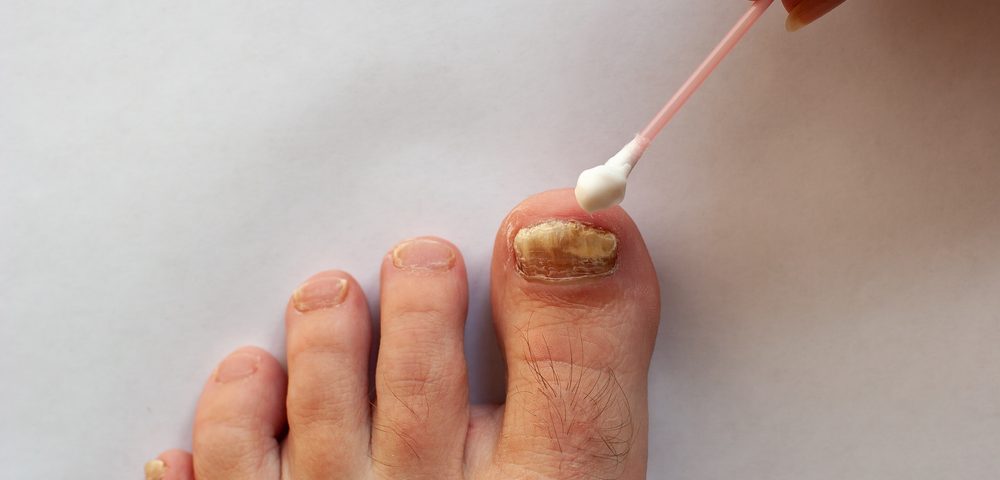
Lamisil is a topical antifungal medication that is used to treat various types of fungal infections such as athletes foot, on the nail, foot between the toes and infected skin, including toenail fungus, most athlete’s foot and jock itch. The active ingredient in Lamisil is terbinafine hydrochloride, which works by preventing the growth of fungi.
Lamisil Cream, also known as terbinafine, is a prescription medication used to treat fungal skin infections, including toenail and fingernail fungus. Lamisil Cream works by stopping the growth of fungi, which can cause the fungal infection to clear up over time.
One of the most commonly asked questions about Lamisil spray is how long it takes for the medication to work. The answer to this question can vary depending on the severity of the fungal infection and the individual patient’s response to the medication.
In general, Lamisil Cream is applied once a day for a period of several weeks to a few months. The duration of treatment depends on the location of the fungal infection and the severity of the infection. For example, toenail fungus may require treatment for up to 12 weeks, while fingernail fungus may require treatment for up to six weeks.
Most patients begin to see improvements in their symptoms within a few weeks of starting treatment with Lamisil Cream. However, it is important to continue taking the medication for the full prescribed duration, even if symptoms appear to have resolved. This is because fungal infections can be stubborn and may require a longer treatment course to fully clear up.
It is important to note that Lamisil Cream is not a quick fix, and patients should not expect to see immediate results. The medication needs time to work and requires consistency in taking the medication as prescribed.
In addition to taking Lamisil Cream as directed, patients should also take steps to prevent reinfection and promote healing. This includes keeping the affected and infected area clean and dry, wearing clean socks or gloves daily, and avoiding sharing personal items such as nail clippers or shoes with others.
Lamisil Cream can be an effective treatment option for fungal infections, including toenail and fingernail fungus. However, the length of time it takes for the medication to work can vary depending on the individual patient’s response to the medication and the severity of the infection. Patients should continue taking the medication as directed by their doctor and take steps to prevent reinfection for the best chance of full recovery. If symptoms do not improve or worsen over time, patients should contact their doctor for further evaluation and treatment options.
When should you not use Lamisil?
While Lamisil can be an effective treatment option for these conditions, there are certain situations in which it should not be used.
Firstly, Lamisil should not be used by individuals who are allergic to terbinafine or any of its inactive ingredients. An allergic reaction to Lamisil can cause symptoms such as hives, itching, swelling, difficulty breathing, and a rapid heartbeat. Patients who experience any of these symptoms should seek medical attention immediately.
Lamisil should also not be used by patients with liver disease or a history of liver problems. This is because Lamisil can cause liver damage in rare cases, and patients with liver disease are at a higher risk of developing this side effect. Patients who have a history of liver problems or abnormal liver function tests should inform their doctor before taking Lamisil.
Patients who are taking certain medications should also not use Lamisil. Lamisil can interact with other medications, including warfarin, cyclosporine, and some antidepressants. Patients should inform their doctor of all medications they are taking, including prescription medications, over-the-counter medications, and herbal supplements, before taking Lamisil.
Additionally, Lamisil should not be used by pregnant or breastfeeding women, unless specifically instructed by their doctor. While the effects of Lamisil on pregnancy and breastfeeding are not fully understood, there is some evidence to suggest that Lamisil can be harmful to developing fetuses and newborns.
Lastly, Lamisil should not be used by individuals under the age of 18, as the safety and effectiveness of the medication in this population has not been established.
As explained here, there are certain situations in which it should not be used. Patients who are allergic to terbinafine or its inactive ingredients, have liver disease or a history of liver problems, are taking certain medications, are pregnant or breastfeeding, or are under the age of 18 should not use Lamisil without consulting their doctor first. It is important to follow the instructions provided by your doctor or pharmacist and to report any potential side effects or adverse allergic reaction to the medication.
What should I avoid while applying Lamisil Tablets?
There are certain things patients should avoid while taking the medication to ensure that they get the maximum benefit from the treatment.
Firstly, patients should avoid consuming alcohol while taking Lamisil. This is because Lamisil can cause liver damage in rare cases that can lead up to liver failure and liver transplant, and alcohol consumption can increase the risk of liver damage. Patients should avoid consuming alcohol while taking Lamisil to reduce their risk of liver damage.
Additionally, patients should avoid smoking cigarettes while taking Lamisil. Smoking can affect the absorption of the medication, making it less effective in treating fungal infections. Patients who smoke should consider quitting or cutting back on their cigarette consumption while taking Lamisil to ensure that they get the maximum benefit from the medication.
Patients should also avoid taking certain medications while taking Lamisil, as these medications can interact with Lamisil and affect its effectiveness. Medications that should be avoided while taking Lamisil include warfarin, cyclosporine, and some antidepressants. Patients should inform their doctor of all medications they are taking, including prescription medications, over-the-counter medications, and herbal supplements, before taking Lamisil.
Patients should also avoid wearing tight-fitting clothing or shoes while taking Lamisil. This is because tight clothing and shoes can trap moisture against the skin, creating an environment that is conducive to the growth of fungi. Patients should wear loose-fitting clothing and shoes that allow air to circulate around the affected area to promote healing.
Lastly, patients should avoid sharing personal items such as towels, socks, and shoes with others while taking Lamisil. Fungal infections are contagious and can easily spread from person to person through contaminated items. Patients should keep their personal items separate and avoid sharing them with others to prevent the spread of fungal infections.
In conclusion, patients taking Lamisil should avoid consuming alcohol, smoking cigarettes, taking certain medications, wearing tight-fitting clothing or shoes, and sharing personal items with others to ensure that they get the maximum benefit from the medication. Patients should follow the instructions provided by their doctor or pharmacist and report any potential side effects or adverse reactions to the medication.
How to protect your liver while using Lamisil Tablets?
While Lamisil can be an effective treatment option for these conditions, it can also cause liver damage in rare cases. To protect your liver while taking Lamisil, there are several steps you can take:
Consult your doctor before taking Lamisil: If you have a history of liver problems or abnormal liver function tests, you should inform your doctor before taking Lamisil. Your doctor may recommend a different treatment option or adjust the dosage of Lamisil to reduce the risk of liver damage.
Monitor your liver function: While taking Lamisil, your doctor may recommend regular liver function tests to monitor your liver health. These tests can help detect any potential liver damage early, before it becomes more serious.
Avoid alcohol: Consuming alcohol can increase the risk of liver damage while taking Lamisil. Patients should avoid consuming alcohol while taking Lamisil to reduce their risk of liver damage.
Avoid other medications that can affect the liver: Lamisil can interact with other medications, including those that can affect the liver. Patients should inform their doctor of all medications they are taking, including prescription medications, over-the-counter medications, and herbal supplements, before taking Lamisil.
Follow the dosing instructions: Patients should follow the dosing instructions provided by their doctor or pharmacist carefully. Taking more than the recommended dose of Lamisil can increase the risk of liver damage.
Report any symptoms of liver damage: Patients taking Lamisil should be aware of the symptoms of liver damage, which can include nausea, vomiting, abdominal pain, dark urine, and yellowing of the skin or eyes. If you experience any of these symptoms while taking Lamisil, you should contact your doctor immediately.
In conclusion, while Lamisil can be an effective treatment option for fungal infections of the skin and nails, it can also cause liver damage in rare cases. Patients taking Lamisil should consult their doctor before taking the medication, monitor their liver function, avoid alcohol and other medications that can affect the liver, follow the dosing instructions, and report any symptoms of liver damage to their doctor. By taking these steps, patients can protect their liver while taking Lamisil and reduce their risk of potential side effects.
What are the different product presentations Lamisil has?
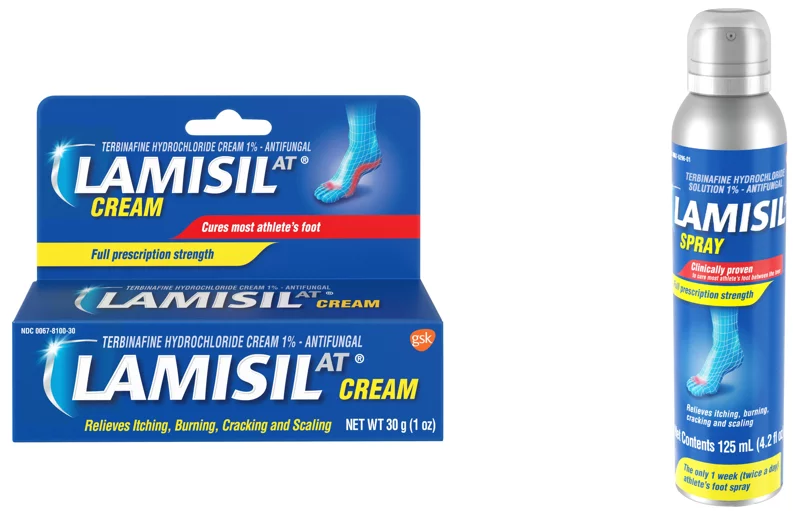
Lamisil, also known as terbinafine, is a prescription medication used to treat fungal infections of the skin and nails. Lamisil is available in several different product presentations, each of which is used for different types of fungal infections.
Lamisil Tablets: Lamisil Tablets are taken orally and are used to treat systemic fungal infections, including fungal infections of the nails. The Tablets work by stopping the growth of fungi, which can cause the fungal infection to clear up over time. The recommended dosage and duration of treatment may vary depending on the severity of the infection and the patient’s response to the medication.
Lamisil Cream: Lamisil Cream is applied topically to the skin and is used to treat localized fungal infections, including athlete’s foot and jock itch. The Cream works by stopping the growth of fungi and reducing inflammation in the affected area. Lamisil Cream is typically applied to the affected area twice a day for several weeks to a few months, depending on the severity of the infection.
Lamisil Spray: Lamisil spray is also applied topically to the skin and is used to treat localized fungal infections, including athlete’s foot and jock itch. The spray works by stopping the growth of fungi and reducing inflammation in the affected area. Lamisil spray is typically applied to the affected area twice a day for several weeks to a few months, depending on the severity of the infection.
Lamisil AT gel: Lamisil AT gel is a topical antifungal medication used to treat fungal infections of the feet, including athlete’s foot. The gel is applied to the affected area twice a day for several weeks to a few months, depending on the severity of the infection. The gel works by stopping the growth of fungi and reducing inflammation in the affected area.
Lamisil Once: Lamisil Once is a single-dose treatment for athlete’s foot. The medication is applied to the affected area once and works by stopping the growth of fungi and reducing inflammation in the affected area. The effects of Lamisil Once can last for several weeks, providing long-lasting relief from athlete’s foot, it mainly relieves itching.
In conclusion, Lamisil is available in several different product presentations, each of which is used to treat different types of fungal infections. Lamisil tablet is used to treat systemic fungal infections, while Lamisil cream, spray, gel, and Once are used to treat localized fungal infections of the skin and nails. Patients should consult their doctor or pharmacist to determine the most appropriate product presentation for their specific fungal infection.
Lamisil Cream Reviews
There are many customer reviews and feedback available online for Lamisil Cream. Many customers report significant improvements in their toenail fungus symptoms after using Lamisil Cream, with some reporting that their toenails cleared up completely within a few months.
However, some customers have reported experiencing side effects while taking Lamisil Cream, including stomach pain, nausea, and diarrhea. In rare cases, customers have reported liver damage after taking Lamisil Cream.
While Lamisil for toenail fungus has a high success rate in treating toenail fungus, some customers may prefer a more efficient and affordable over-the-counter (OTC) treatment option. Otther toenail fungus treatments are natural treatment options that claim to be effective in treating toenail fungus without the potential side effects of prescription medications like Lamisil.
Overall, the customer reviews and feedback on Lamisil Cream are mostly positive, with many customers reporting significant improvements in their symptoms.
However, potential side effects should be considered before starting treatment, and patients should monitor their symptoms closely during treatment.
Where can you order a Lamisil for Toenail Fungus?
Lamisil for toenail fungus can be ordered online through various retailers, including Amazon, or purchased at your local pharmacy with a valid prescription from your doctor.
Final Verdict on the Effectiveness of Lamisil Cream
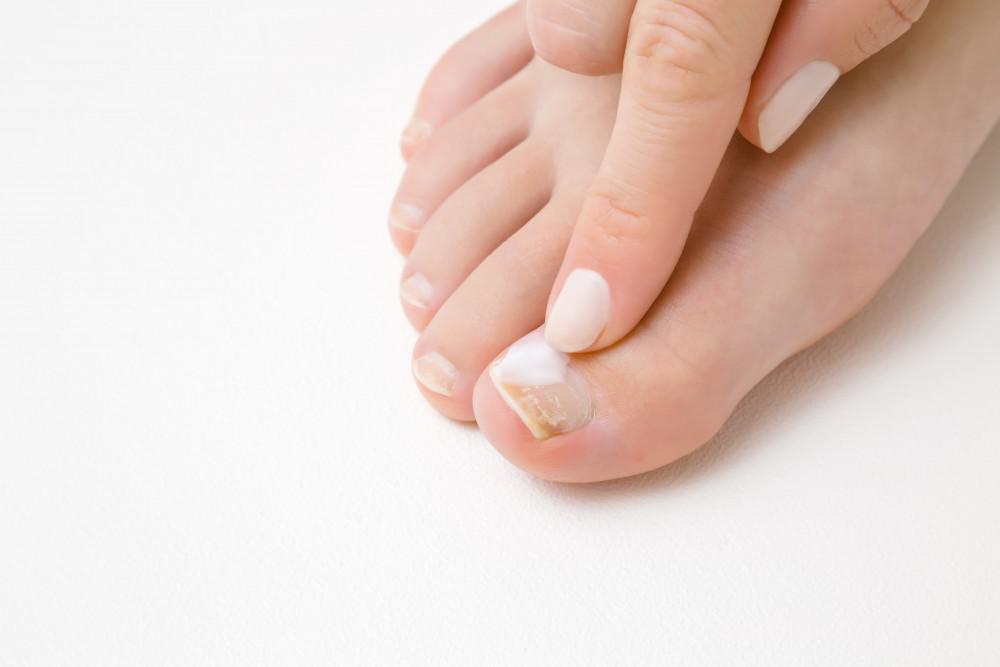
Overall, Lamisil Cream is an effective treatment option for toenail fungus and athletes foot, with a high success rate and fast results. However, potential side effects and the high cost of treatment should be considered before starting Lamisil Cream.
For patients who prefer a natural treatment option, Swissklip Medi-Care Anti-Fungal Stick Treatment may be a better alternative, as a natural treatment option that claims to be effective in treating toenail fungus without the potential side effects of prescription medications like Lamisil Cream.
Ultimately, the choice between Lamisil Cream and other toenail fungus treatments will depend on the individual patient’s needs, preferences, and budget.
Patients should consult with their doctor to determine the best treatment option for their specific case of toenail fungus.

